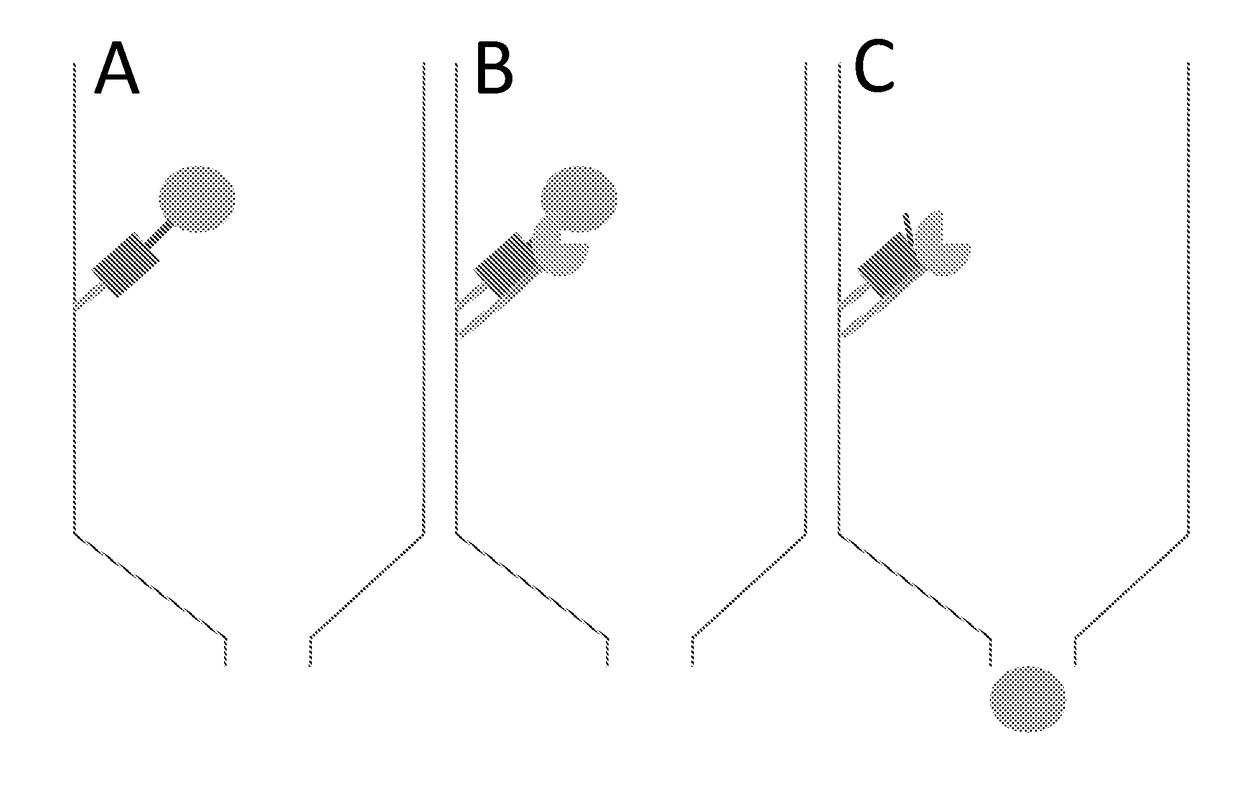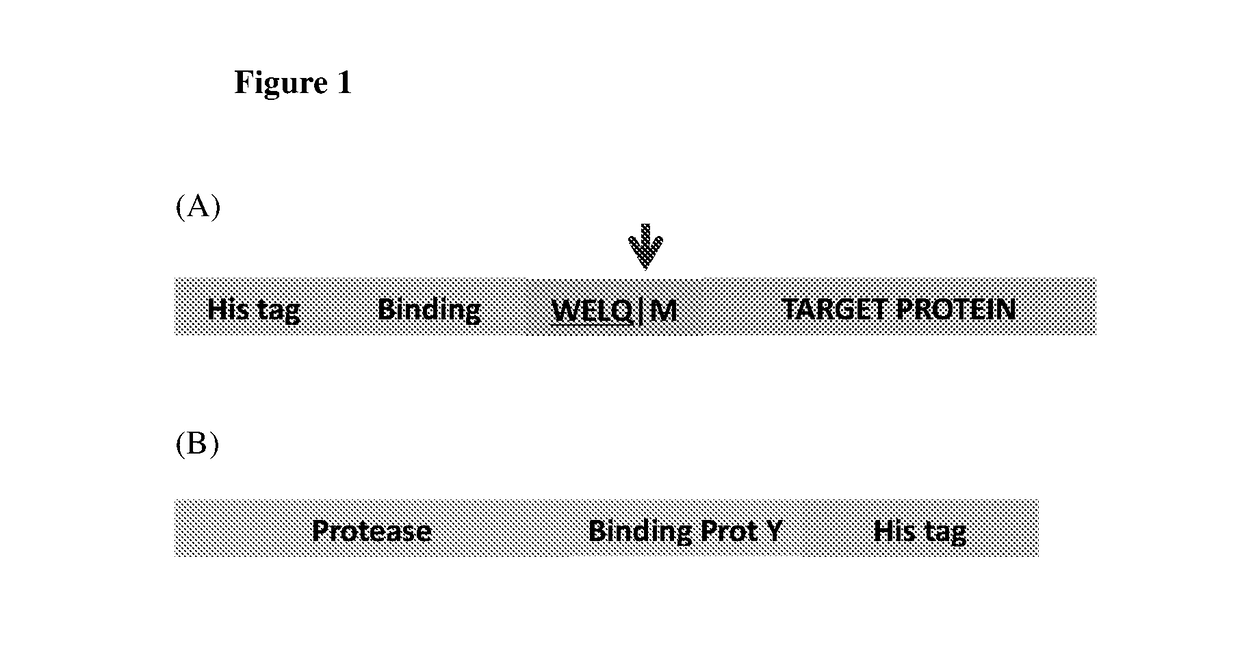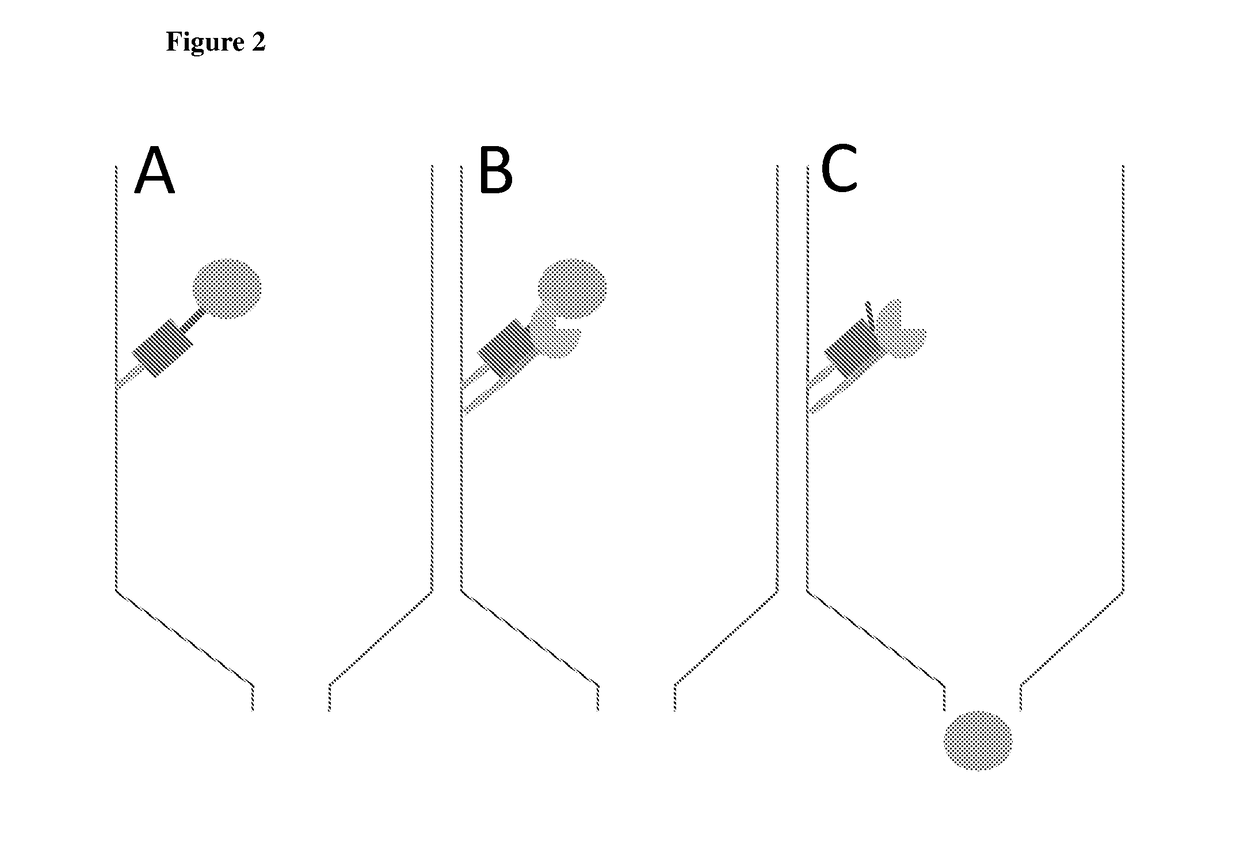Native protein purification technology
a technology of purification technology and protein, applied in the field of biochemistry, can solve the problem of inefficient cleavage of the recognition si
- Summary
- Abstract
- Description
- Claims
- Application Information
AI Technical Summary
Benefits of technology
Problems solved by technology
Method used
Image
Examples
example 1
Description of the Present Technology and Cleavage Results Using Two Different Recognition Site / Protease Systems
[0120]The present technology involves expressing the target protein (protein of interest) with an N-terminal fusion as depicted in FIG. 1(A). Briefly, the N-terminal tag comprises the following elements; a His-tag to bind to the affinity matrix (yellow), a small binding protein X (green), followed by a linker and a protease site with a methionine instead of the preferred amino acids at the P1′ position (blue). This N-terminal fusion is linked to the target protein (brown). The red arrow indicates the position of cleavage between the protease site and the methionine. This methionine constitutes the first amino acid of the native target protein. It is noted that although the schematic in FIG. 1(A) shows a “WELQ” site recognized by SplB protease, sites corresponding to other proteases may also be used.
[0121]Additionally, the corresponding protease is prepared (FIG. 1(B)), whi...
example 2
Target Protein Cleavage Using the Binding Pair of ARVCF or Truncated Versions Thereof and ePDZ-b
[0125]First, the principle was tested using ePDZ-b fused to the target protein (orange fluorescent protein, OFP) and ARVCF peptide fused to SplB protease (SplB-AP). SplB protease cleaves after the sequence WELQ with methionine at the P1′ position poorly tolerated. When combined with potential steric exclusion by the protein of interest being purified, methionine at P1′ will pose barriers to optimal SplB protease cleavage. The WELQ peptide sequence was introduced between ePDZ-b and OFP. Incubation of the fusion substrate (ePDZ-b-WELQ-OFP) with a stoichiometric excess of either SplB-AP or commercially available SplB protease (SplB-COM) resulted in cleavage and generation of native OFP (FIG. 5). However, this was notably more efficient for SplB-AP compared to SplB-COM and SplB fused to a control peptide that does not interact with ePDZ-b (SplB-CON) (cf. lanes 2, 6-8). Neither SplB-COM or Spl...
example 3
Applying the Concept of the Present Invention to On-Column Cleavage
[0127]It was explored whether the enforced-proximity concept was applicable to conventional on-column cleavage and purification protocols using histidine tagged proteins. Complete immobilisation of protease via its histidine tag could reduce turnover during on-column cleavage of a co-immobilised substrate, necessitating use of increased amounts for efficient cleavage. Addition of 30 mM imidazole alleviated this constraint, resulting in improved cleavage efficiencies using histidine tagged ePDZ-b -WELQ-OFP and SplB-AP proteins (FIG. 7). These conditions were used for the on-column cleavage of histidine tagged ePDZ-b -ENLYFQ-OFP protein by histidine tagged TEV-AP4. Upon elution with PBS, the yield of native OFP was significantly increased when histidine tagged TEV-AP4 was used compared to histidine tagged TEV (FIG. 8, compare lanes 6 and 15). Both mass spectrophotometry and N-terminal sequencing analysis confirmed corr...
PUM
| Property | Measurement | Unit |
|---|---|---|
| affinity | aaaaa | aaaaa |
| nucleic acid | aaaaa | aaaaa |
| affinity chromatography | aaaaa | aaaaa |
Abstract
Description
Claims
Application Information
 Login to View More
Login to View More - R&D
- Intellectual Property
- Life Sciences
- Materials
- Tech Scout
- Unparalleled Data Quality
- Higher Quality Content
- 60% Fewer Hallucinations
Browse by: Latest US Patents, China's latest patents, Technical Efficacy Thesaurus, Application Domain, Technology Topic, Popular Technical Reports.
© 2025 PatSnap. All rights reserved.Legal|Privacy policy|Modern Slavery Act Transparency Statement|Sitemap|About US| Contact US: help@patsnap.com



